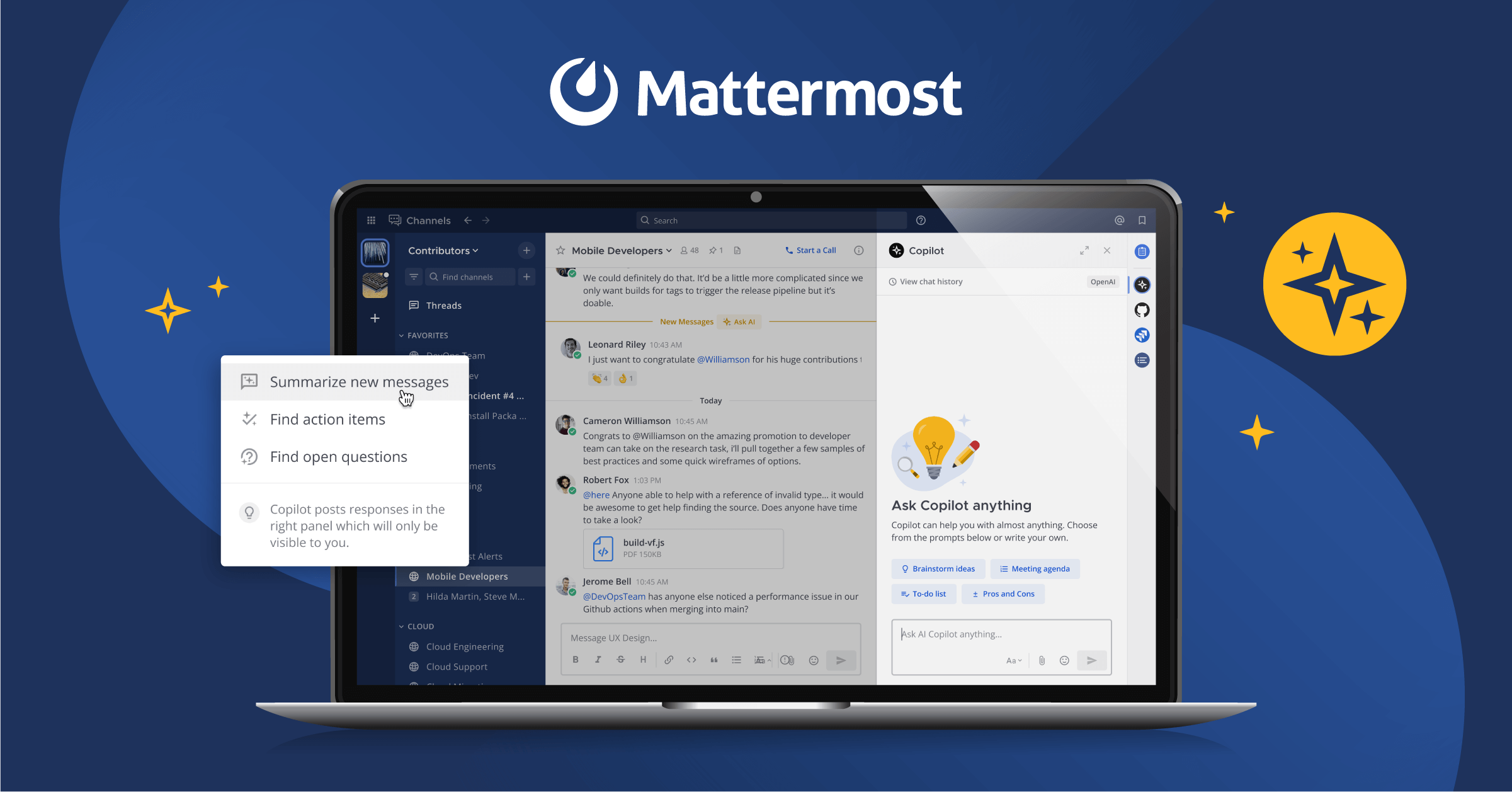
Mastering Remote Collaboration
The Guide to Empowering Your Team to Thrive in a Remote Environment
Remote work has huge benefits for organizations and the people on their teams. Organizations can benefit from wider recruitment opportunities, higher employee retention rates, and reduced overhead. Employees are often able to achieve a better work-life balance and enhanced productivity when they’re able to work remotely.
But remote work is not without its own unique challenges. Managing projects, tracking tasks, and closing open loops all require a different workflow than what is true in an in-person office environment. Employees might find difficulty settling into the right balance between work and personal life when working from home and may need help creating a sustainable daily routine.
Remote work challenges are remote collaboration challenges
The biggest mistake that organizations make with remote work is expecting in-office behaviors, tools, and processes to map exactly to the remote experience. While most teams have adopted some amount of remote work in the last few years, few organizations were actually designed with remote collaboration and productivity in mind. That lack of intentionality can create any number of issues, from a stale, uninspiring team culture to struggles with tools that actually impede productivity rather than enabling it.
While solo work often translates well to a remote environment, when it comes to working together, teams are more likely to experience productivity challenges. When we talk about the challenges of remote work, we’re usually talking about the challenges of remote collaboration. By enabling your team to collaborate more effectively, you’ll be able to foster a happier, better connected, and more productive work environment.
Learn how to master remote collaboration
As organizations commit to long-term remote and hybrid work models, we are just now beginning to understand what remote teams need to collaborate most effectively. In this guide, we’ve compiled the essential tips, tricks, and advice that we’ve learned over the years as a remote-first organization. Let’s dive in to learn how your team can start to master remote collaboration today!
If you’re looking to explore the potential of ChatOps for your organization, then you’re in the right place. In this guide, we’ll walk through the progressive steps towards developing a mature ChatOps practice, no matter how your team, tools, and processes are structured.
It can be hard to know what ChatOps looks like without real-world examples. We’ll show you how teams use ChatOps every day at each step. No matter how simple or sophisticated your ChatOps practice, your team will work better together, and your organization will benefit from increased efficiency and productivity.
Let’s get started!
In the office, a strong team culture can grow organically. The shared values, habits, and inside jokes that spring out of sharing a physical workplace don’t need much encouragement. Without that shared space, remote team members can end up feeling isolated and out of sync with each other.
Remote team cultures can be just as vibrant and engaging as in-office ones, but they require a little extra help along the way. Providing your team with the framework that will allow them to find the right work-life balance, foster relationships with each other, and contribute to building a better workplace for everyone is a great place to start.
Establish clear boundaries and expectations
While remote work gives employees more freedom and flexibility in their day, it’s all too easy for remote workers to experience burnout. Without regular face-to-face interaction, they can easily feel isolated and out of the loop. This can lead not only to lower morale but also to a drop in productivity.
Establishing clear boundaries and expectations is a crucial first step in managing a remote workforce. You may want to plan a daily or weekly check-in to ensure everyone remains on the same page and that none of your colleagues fall behind. Encourage your team to carve out time for breaks each day, and to set recurring 1-on-1s with the people they might regularly grab coffee with while in the office.
Create great onboarding experiences with documentation
All team cultures (not just remote ones!) are stronger when everything is written down because everyone who joins the company has the same baseline: a consistent onboarding experience and documentation as the shared source of truth.
Remote onboarding done right can be far more scalable, efficient, and impactful. In-office onboarding experiences are usually a series of person-to-person interactions that mete out information bit by bit — you might talk to 18 different people throughout the day, each with a different piece of the organizational puzzle. When you’re a remote company, onboarding is a lot more focused on reading through information.
Remote Collaboration in Action
Want to see what remote onboarding looks like in practice? Check out the Mattermost Onboarding handbook to learn more about how we bring new members of our fully remote team up to speed.
The first few weeks at a remote organization will still be conversation-heavy, but the interactions new hires have are more meaningful because they’ve gotten all the administrative stuff out of the way. They can get up to speed on the history and context of ongoing projects and initiatives when they join and start asking higher-quality questions during those first interactions.
Celebrate wins as a team
One of the biggest differences between in-office and remote work environments is that a lot of the action tends to happen “behind the scenes” in the latter.
As the team moves from project to project from their respective homes, it can be challenging to remember to stop and celebrate wins together. As a result, the hard work that members of the team do can go unnoticed.
Look for opportunities to call attention to the successes and accomplishments of both the team as a whole and individuals. Dedicate a few minutes to every All-Hands meeting to recognize team members who have gone above and beyond that month. Include a virtual “launch party” in planning major product launches and give everyone the opportunity to relax together after all of their hard work is done.
Encourage virtual social spaces to connect and unwind
Social interaction between colleagues plays a huge role in promoting positive company culture. One of the biggest losses for remote teams is the ability to catch up and unwind together in the same physical space throughout the workweek.
Collaboration platforms don’t have to be all business all the time. They can also provide a great opportunity to connect with teammates. Adding social and “fun” plugins to your messaging platform gives your team opportunities to play games, set up coffee chats, and generally get to know each other a little better. Of course, adding custom emojis is another great way to give your team a way to build a cultural shorthand with each other.

Creating social events, like Team Happy Hours, and spaces — a “Hiking Enthusiasts” channel, for example — provide opportunities for the team to relax and get to know each other. Whether that’s chatting about weekend plans, sharing the latest baking project on a social channel, or scheduling group meditation, yoga, or cooking sessions, making opportunities to bond as a team helps foster better communication between team members.
While some people seem like they were born to work remotely, remote collaboration and remote productivity don’t always come naturally — they are learned skills that can take some trial and error to perfect. Encouraging your team to flex the skillsets that are most useful for remote collaboration can help everyone stay connected and productive more effectively.
Embrace asynchronous communication
One of the key advantages of remote work is that the team has greater flexibility, but it can also be a major challenge — especially for teams working across multiple time zones.
What might have been a quick “grab a few people” kind of meeting in the office now requires jumping through logistical hoops.
So what does asynchronous communication look like?
First, default to written communication! Taking a detail-oriented, “documentation-first” approach can be immensely helpful in terms of keeping everyone on the same page and having something to refer back to if necessary. Recurring team meetings (e.g., weekly or biweekly) can serve as an excellent base to start from when trying to streamline communication.
While asynchronous comms are key to remote work, establishing a regular cadence of how and when people will sync up with each other can add a great deal of clarity and structure to the week. It’s also a good idea to bring everyone in the organization together at least once a month for an “all hands on deck” catch-up meeting, during which current and future goals and successes can be discussed and elaborated on at length.
Tips for Managing Teams Across Timezones
While there are big upsides to tapping into a global workforce, collaborating when one member of the team is ending their day just as another is getting started (or breaking for lunch) can be tricky.
Check out our favorite tips for teams working across multiple timezones:
- Set your work hours: Let others know the parameters of your regular workday, so they know when to schedule meetings or message you. If you’re using Google Calendar, you can mark the start and end of your workday under Settings > Working Hours.
- Block off meeting-free time: Set aside designated time in your day or week to be unavailable for meetings. It helps to ensure that you take a lunch break or go for a walk, and also gives you space to answer emails or simply think and recharge.
- Let everyone know you’re Away: Whether you are actually away from your desk or just need some quiet time, you can set an “out of office” responder for direct messages.
- Visualize multiple time zones at once: When everyone is spread all over the world, it’s hard to quickly see who’s available at what time. Try Figure it Out, an elegant Chrome extension that displays your team members’ time zones whenever you open a new tab.
Document everything
“Tribal knowledge” is a common challenge faced in DevOps and can put newer team members at an acute disadvantage when allowed to go unchecked; it’s one of the quickest paths to information siloing and can be difficult to stop once it picks up momentum.
One way to nip this problem in the bud is to list out all processes and procedures in clear, concise documentation, and to make it easily available for reference at any point in time.
This allows people to get the information they need without having to rely on pinging other team members who may be too busy to help at the time and can contribute to a more efficient workflow overall.
Prioritize and support written communication skills
One thing that’s become even more clear during the shift to remote work: There are people who really like working remote and thrive in a remote work environment, but it’s not for everyone. While many people have realized working from home is amazing — they love not having to commute, they love the independence, and they love the flexibility — there are others who really miss the office environment.
A lack of strong written communication skills is a common point of friction in remote collaboration. If your team is full of strong writers who consume information in written formats really well, they’ll probably have an easier time transitioning to a remote team than someone who prefers face-to-face communication. Tools like Grammarly that can help teammates be more cognizant of their written communication tone and clarity might be a useful investment if you find that your team members are often getting their signals crossed.

Think about the tools, processes, and best practices your team uses. Were they designed for remote work, or have they simply been ported over from your in-office habits? It’s easy to take our workflows for granted, but simply replicating what worked in the office in a remote setting can be frustrating and inefficient. Adapting and adjusting how you collaborate to work with the nuances of remote work instead of against them can make a huge difference in your team’s productivity and happiness.
Identify technical challenges for your team
As a fully remote company, we’ve learned firsthand through years of trial and error at Mattermost how using the right tools can effectively reduce external noise and help empower teams to stay laser-focused on whatever the task at hand may be. Nothing takes a team out of their flow like a dropped video call or a clunky project collaboration dashboard.
Collaboration software must work for and with the user as opposed to introducing additional, unnecessary hurdles that ultimately result in frustration and productivity loss.
While swapping out tools can be a significant undertaking, starting the process by looking at how your team collaborates and where they’re experiencing problems can help you identify where an investment makes sense.
Keep meetings small and focused
One of the superpowers of a remote team is embracing the ability to work asynchronously. Unfortunately, this can also make large group collaboration more challenging. There are some problems you might want a relatively large group to work together — for example, planning an annual onsite. In an office setting, you’d just get those four or five or seven people together camped out in a conference room for a whole week, knocking out the problem. But it can be particularly challenging to wrangle a large group of people to carve out a long chunk of time to work together remotely. Everyone has other priorities they’re trying to juggle.
One of the best tactics for remote collaboration is keeping real-time collaborative meetings. Applying pair design practices can be especially helpful; if you can break down and prioritize bigger problems into smaller problems two people can tackle, they can work through the problem, talk through it, and agree on it. Then, when they come back to a broader group, they come in with a much more polished solution, and it’s easier to get an idea implemented.
Encourage best practices for dealing with information overload
In a remote setting, you may feel like you need to keep in constant contact with your teammates so you can stay connected or not miss any critical discussions. It’s important to fight this temptation; we all need quiet time to focus on important projects. Some practices that can help include:
- Blocking time on your calendar for focused work
- Encouraging regular audits of what recurring meetings and chat channels they’re in
- Fostering a culture of asynchronous communication (just because someone sends you a message doesn’t mean you need to drop everything to answer it!).
Keeping Your Messaging Platform Focus-Friendly
Feel like that little red number is always pulling you away from focused work time? These simple tools and techniques can help you replicate the role of your favorite quiet nook at the office.
-
Manually set your availability status: Many tools, including Mattermost and Google Calendar, allow you to limit your distractions, hide your availability, or let others know that you’re unavailable. The “Do Not Disturb” setting disables desktop, email, and push notifications. You can also set your status using a slash command.
- Prioritize which things get your attention: You can cut down on time spent tracking everything in your world and truly focus on what’s timely, urgent, or relevant to you. In Mattermost, you can modify your notification settings so that you only see notifications of direct messages, @mentions, specific channels, or keywords. You can also mute channels or ignore mentions for @channel, @here, and @all.
- Stay hyper-organized with messages: At busy times, you may glance at a message but not have time to really address it. Mark posts as unread, and the next time you visit the channel, you’ll automatically land on that message. Other tips include using hashtags to organize content and quickly find topics and using the “Reply” button to keep conversations organized in threads.
- Manage your open browser tabs: Many of us keep an array of browser tabs open, even though we may only be actively working in one or two of them. A good habit is to close those you don’t plan to use in the next hour – or to close them at the end of the day. Also, try The Great Suspender, a Chrome extension that allows you to temporarily suspend unused open browser tabs and reduce your browser’s memory footprint.
We hope that these guidelines provided some useful guidance on mastering the art of remote collaboration!
As a final thought, keep in mind that truly remote workforces are still somewhat in the early stages and that there isn’t one perfect approach or tool that will fix all your remote collaboration problems. By committing to continually iterating and improving your remote work practices, you can give your team a more satisfying, productive, and collaborative remote experience.



